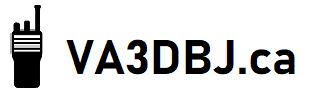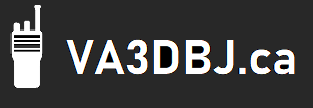Software

Amateur and General Radio Software
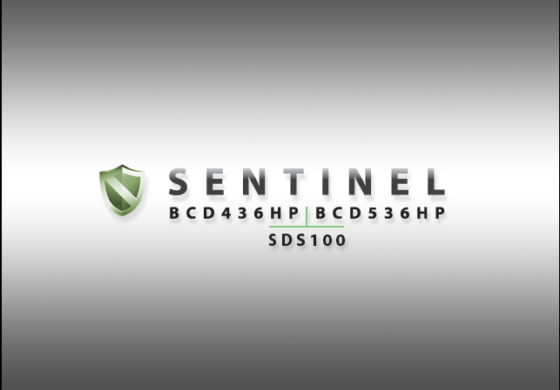
Sentinel – Software package published by Uniden, for their HomePatrol-1, HomePatrol-2, BCD436HP, BCD536HP, SDS100 and SDS200 scanners; freeware that allowing all users to download and try, before purchase of the scanners. Both version give the user the ability to Update Firmware, Update the Radio Reference Data Base (RRDB), build, create, edit and maintain Favorite List, Systems, Departments, analog & digital channels (Talkgroups), frequencies and various other attributes including Services Type to Monitor all via the software package for Windows based PC’s and not MAC and requiring a free PC USB port a USB A – USB Mini B connection cable and/or a MicroSD card reader and/or adapter for standard sized SD cards. Follow Uniden recommendation on install.
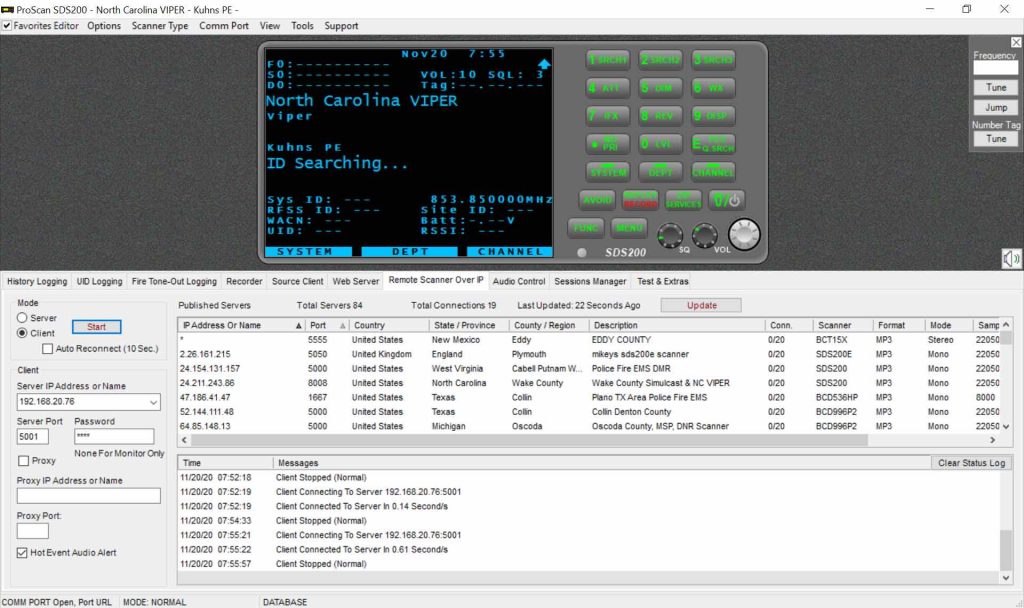
ProScan – ProScan is a software solution that allows you to control a radio scanner through your computer. Luckily, the tool supports a wide range of scanner types, including BCT15, BCT15X, BC250D, BC296D, BR330T, BC346XT, BC346XTC, BCD325P2, BCD396T, BCD396XT, BCD436HP, BCD536HP, BC780XLT, BC785D, BC796D, BCD996T, BCD996XT, BCD996P2, SDS100, SDS200, SDS100E, SDS200E, UBCD3600XLT and USDS100.
The product is full of features that can help do more than what you can normally do if you use the old hardware-based tools. First, it lets you program a database with the available frequencies. Second, it allows you to control the program remotely through a standard web browser. Third, and this is probably the one that I find most convenient, the tool lets you use a remote scanner over IP. Fourth, it has a built-in recorder for the audio streams. Other features you may find quite convenient are the possibility to monitor channels and manage sessions.
- Database Programming • Web Server (remote control using web browser)
- History, UID, & FTO Logging • Remote Scanner Over IP
- Source Client (for streaming audio to servers)
- Band Scope • Control Channel Monitoring
- Recorder • Audio Flow Diagram
- Sessions Manager
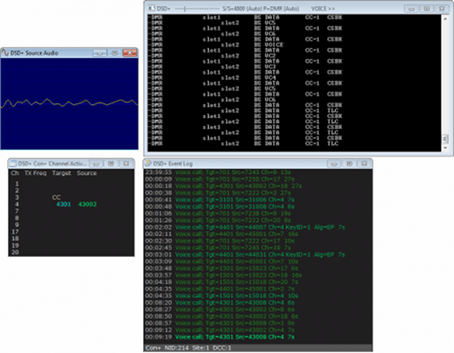
DSD Plus – DSDPlus is a Win32 application capable of reliably decoding multiple types of digital audio formats commonly found on VHF, UHF and 800 MHz, including (but not necessarily limited to):
- P25 Phase 1
- ProVoice EDACS Digital voice
- X2-TDMA – Motorola public safety TDMA system with P25 style signaling (mostly based on DMR)
- DMR/MOTOTRBO – Digital Mobile Radio standard
- NXDN – 9600 baud (12.5 kHz) NEXEDGE and 4800 baud (6.25 kHz) NEXEDGE/IDAS – both trunked and conventional
- D-STAR – no audio
Other Features
- Ability to decode from live audio or from recorded .wav files. Audio file sources need to be 48kHz or 96kHz, 16-bit mono PCM .wav files.
- Ability to save audio output in both .WAV and .MP3 format.
- Ability to choose both your audio input and your audio output
- Ability to pass audio from two-slot systems to separate speakers simultaneously
- Advanced decoder options are available to allow you to fine tune DSDPlus for a particular site / system / transmitter that you are monitoring.
OP25 – OP25 is a not-for-profit project to bring together folks that are interested in implementing APCO P25 using a software-defined radio on Linux systems. Their goal, is to build a software-defined analyzer for APCO P25 signals that is available under the GNU Public License (GPL).
APCO Project 25 is the digital communications standard used by many police and emergency services throughout the world. Most notably the US, Canada and Australia deploy systems based on P25. Compared to existing analogue systems P25 offers improved spectrum use, coverage and flexibility. Provision is made to ensure the confidentiality of traffic, to allow the use of trunking and the provision of data in addition to voice services.
For more information on downloading and installing on Linux, please click here.
Satellite Tracking Software
There are numerous satellite tracking programs out there and they are all very nice programs. But there are those that stand out as some of the best. Below are some of the programs that I believe are well worth your time to look into. Take a look at them and see if they are right for you.
Orbitron – Orbitron is a satellite tracking system for radio amateur and observing purposes. It’s also used by weather professionals, satellite communication users, astronomers, UFO hobbyist and even astrologers. Orbitron shows the positions of satellites at any given moment (in real or simulated time). Orbitron is available for Windows but can be operated on Linux via Wine.
Sebastian Stoff has done a great job on taking satellite tracking to the next level. Even though satellite tracking hsn’t really changed much through the years, Sebastian has given it a new look. I have been very proud to help Sebastian with a very small part on his project, by providing the satellite information.
After taking some time off, Sebastian has returned and is looking at improving his very popular software. He is even looking at a new web based project as well. For more information, please visit his site or his new forum by clicking here .
Gpredict – Gpredict is a real-time satellite tracking and orbit prediction application. It can track an unlimited number of satellites and display their position and other data in lists, tables, maps, and polar plots (radar view). Gpredict can also predict the time of future passes for a satellite, and provide you with detailed information about each pass.
Gpredict is different from other satellite tracking programs in that it allows you to group the satellites into visualisation modules. Each of these modules can be configured independently from the others giving you unlimited flexibility concerning the look and feel of the modules. Naturally, Gpredict will also allow you to track satellites relatively to different observer locations – at the same time. Gpredict is available for Linux and Windows operating systems.

David Ransom Software – STSORBIT PLUS, usually known as STSPLUS, is intended for use during Space Shuttle missions and for general satellite tracking using NASA/NORAD 2-Line Orbital Elements. One primary satellite and up to 32 additional “static” or “real time” satellites may be simultaneously tracked in real time on most computers.
David Ransom’s site was reported non-operational as of December 1, 2006 – David passed away on November 5th, 2006. As a tribute to Dave and his hard work for NASA, USAF, Amateur Radio operators and every satellite tracker, David Cottle and myself have made the full STSPlus package available to all.
You can get the entire package here.
Two-Line Element Files – TLE
The following information provided by numerous sources that is updated on a almost daily basis. This section has been a combined effort by myself and Dave Cottle, with links and other information provided by John David Corby and Dr. Kelso. Thanks to all.
- Dave Cottle’s TLE files available at http://www.tle.info
- Secondary site TLE files available at http://www.idb.com.au/files/tle_data/
Aus-City – Operated by David Cottle. Aus-City has provided a forum, that not only provides the latest space related information, but also provides a place for you to ask questions and participate in the ongoing, near-real time discussions. Aus-City has provides satellite two line elements (TLE’s) via the TLE.INFO web site. The TLE’s are update every 6 hours.
CelesTrak – Operated by Dr. T.S. Kelso since 1985, CelesTrak has established a credible reputation worldwide for providing educational materials and standard data to the space community such as two-line element sets, earth orientation parameters, solar weather data, geomagnetic indices, precision orbit ephemerides, and associated models and documentation.
Share this:
- Click to share on Facebook (Opens in new window) Facebook
- Click to share on X (Opens in new window) X
- Click to share on Bluesky (Opens in new window) Bluesky
- Click to share on Threads (Opens in new window) Threads
- Click to share on Mastodon (Opens in new window) Mastodon
- Click to share on Pinterest (Opens in new window) Pinterest
- Click to share on LinkedIn (Opens in new window) LinkedIn
- Click to share on Reddit (Opens in new window) Reddit
- Click to share on Tumblr (Opens in new window) Tumblr
- Click to email a link to a friend (Opens in new window) Email
